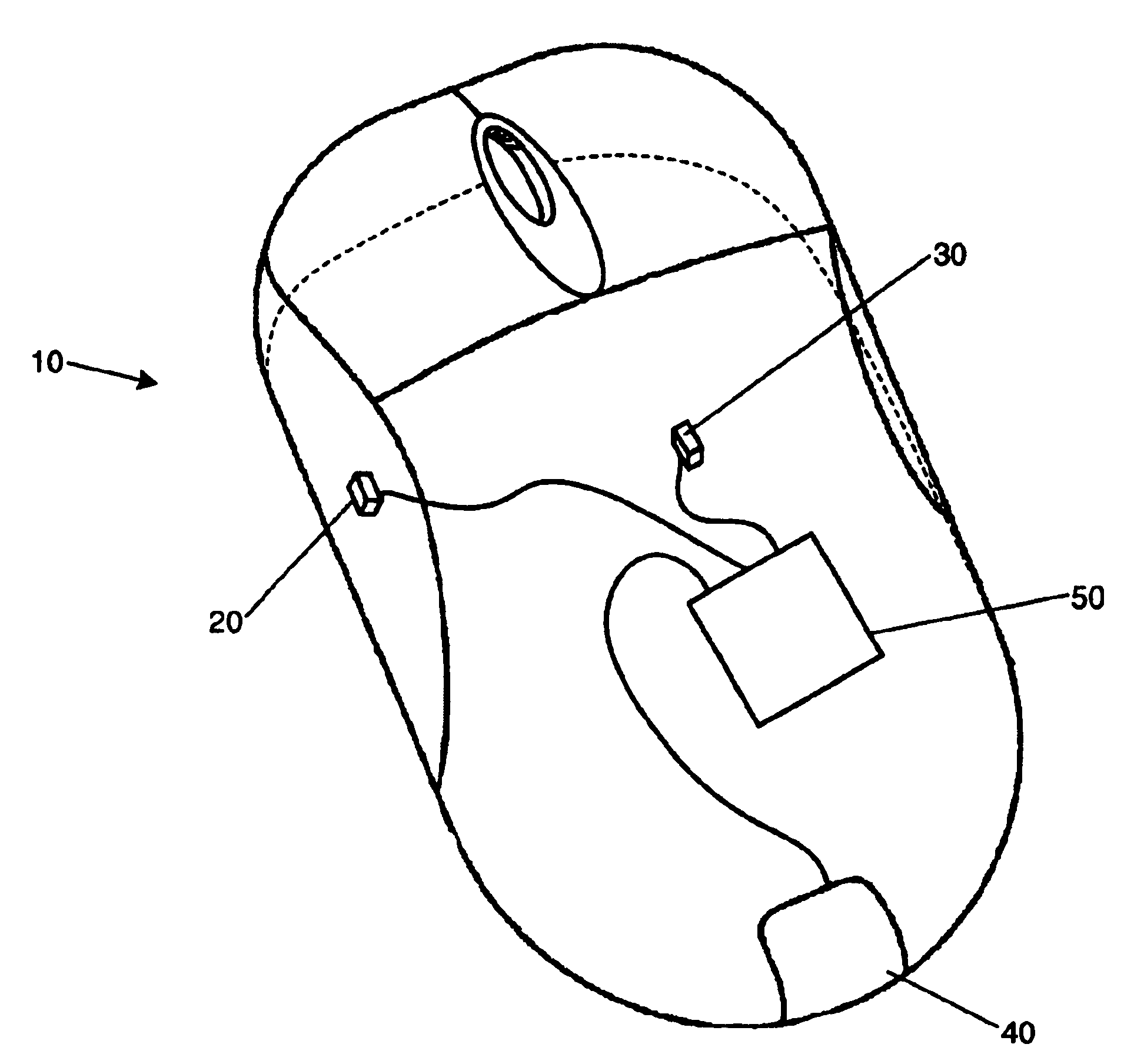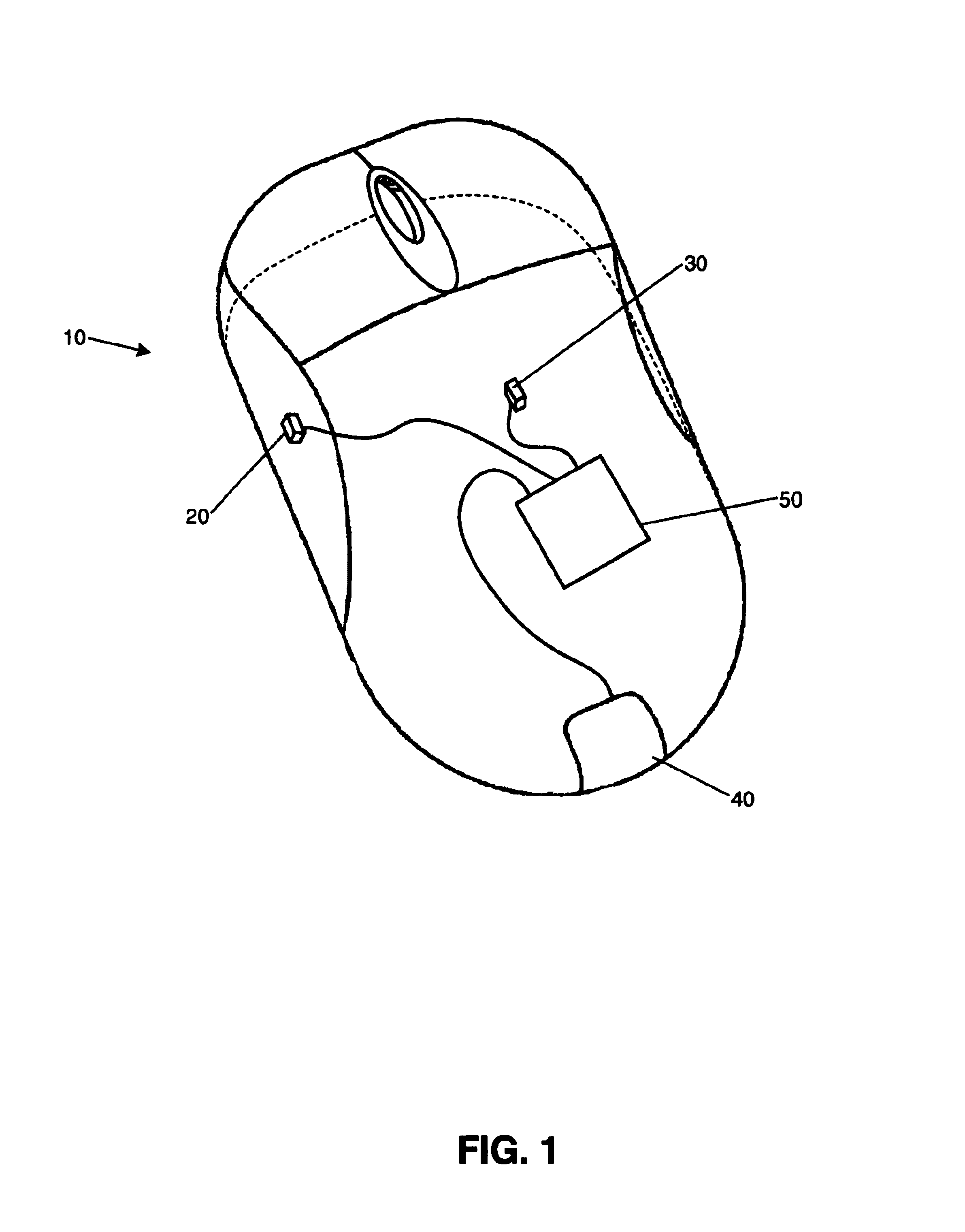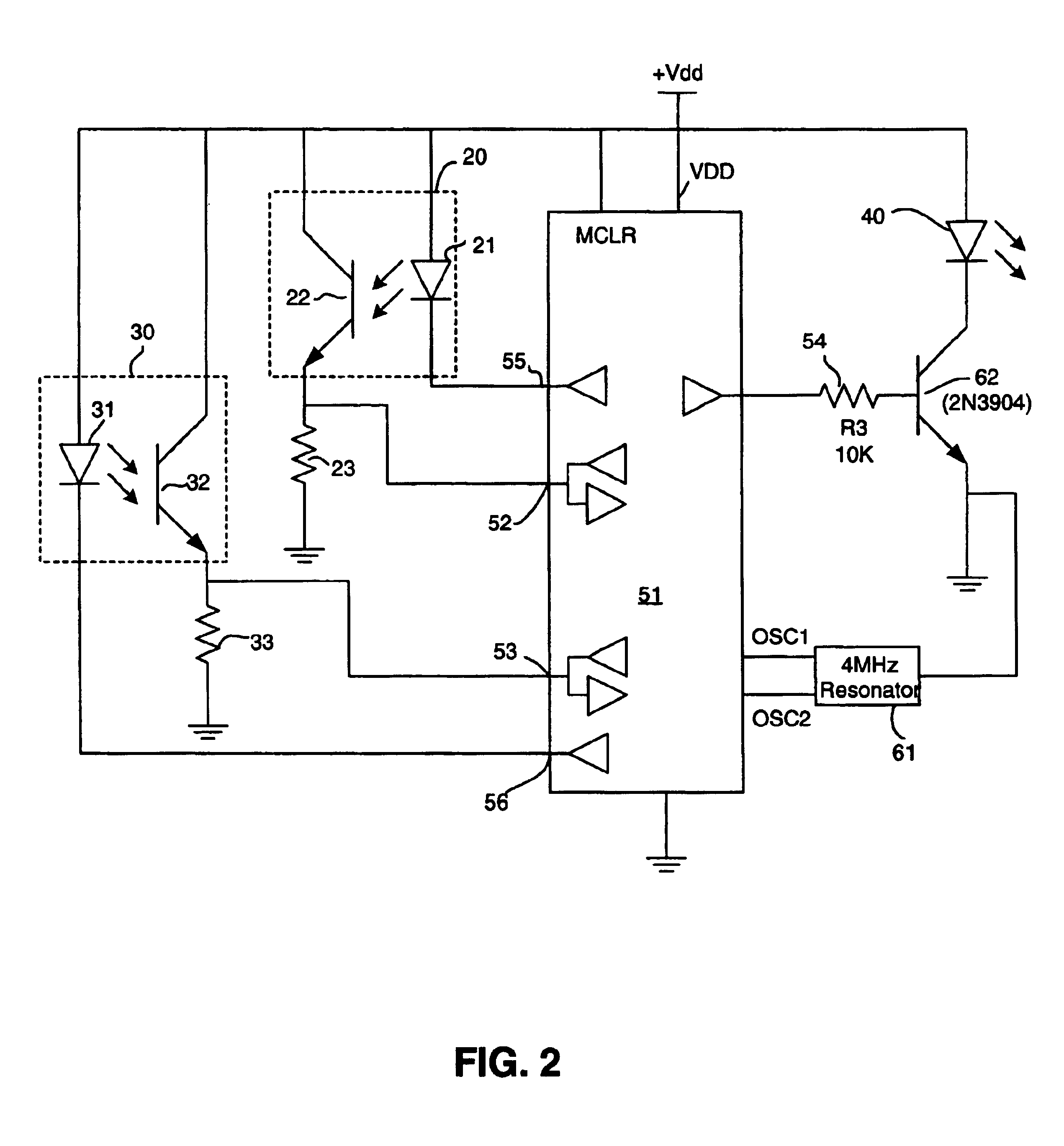Proximity sensor with adaptive threshold
a threshold and sensor technology, applied in the field ofproximity sensing systems and methods, can solve the problems of battery power of devices, significant periods of idle time, and increased demand for longer intervals between battery replacement or recharging, and achieve the effect of false detection
- Summary
- Abstract
- Description
- Claims
- Application Information
AI Technical Summary
Benefits of technology
Problems solved by technology
Method used
Image
Examples
Embodiment Construction
[0031]An exemplary application of the invention within a computer input device is presented. Specifically, a wireless, optically tracking computer mouse is described by way of example. However, the invention has much wider-ranging application, and can be used in numerous devices wherein it would be advantageous to conserve battery power during periods of non-use. The invention also has a useful application in other data input devices—portable and non-portable, wireless and wired, self-contained and peripheral (e.g., to a host computer). The invention finds particularly useful application (but is not limited to) battery powered devices which are intermittently used and generally left on over extended periods of time so as to provide ready usability when demand so requires. Such devices include (but are not limited to) portable computers, personal data assistants (PDAs), tablet computers, cellular phones, pagers and wireless computer peripherals, e.g., mice and keyboards. Moreover, th...
PUM
 Login to View More
Login to View More Abstract
Description
Claims
Application Information
 Login to View More
Login to View More - R&D
- Intellectual Property
- Life Sciences
- Materials
- Tech Scout
- Unparalleled Data Quality
- Higher Quality Content
- 60% Fewer Hallucinations
Browse by: Latest US Patents, China's latest patents, Technical Efficacy Thesaurus, Application Domain, Technology Topic, Popular Technical Reports.
© 2025 PatSnap. All rights reserved.Legal|Privacy policy|Modern Slavery Act Transparency Statement|Sitemap|About US| Contact US: help@patsnap.com



